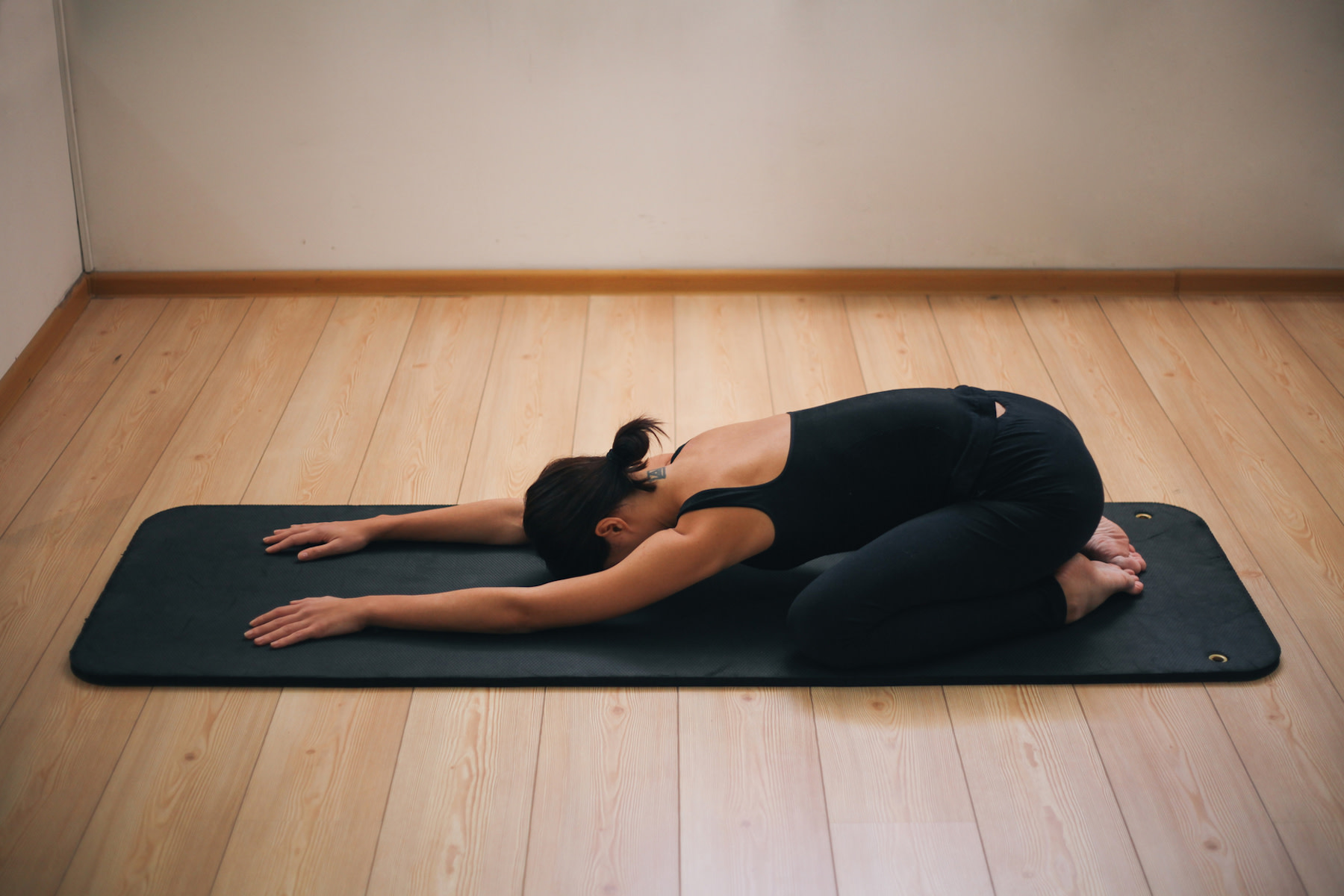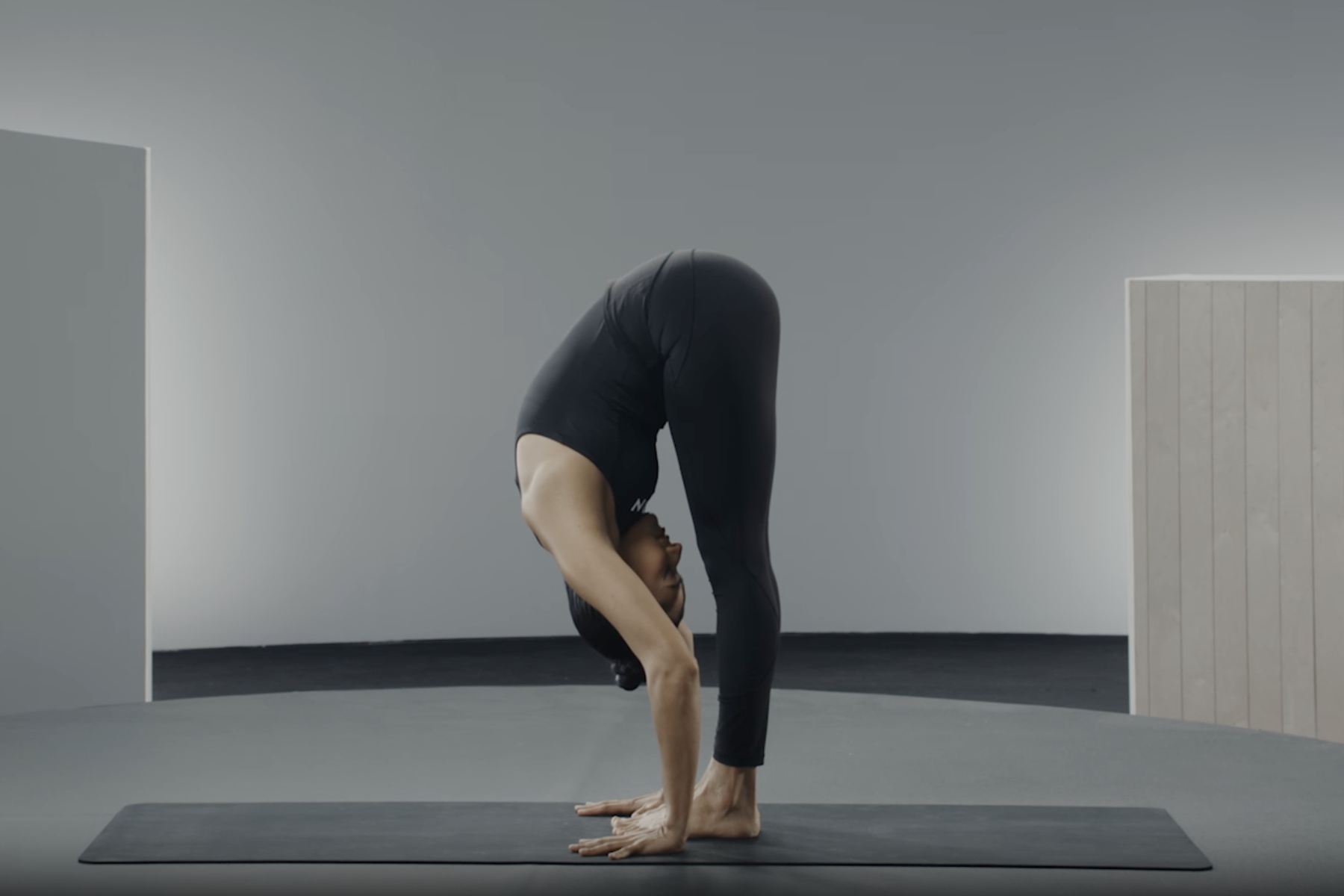
©Marija Mandic/Stocksy United
5 Gentle Yoga Poses to Help You Relax and Unwind
Feeling burned out or craving some more coziness? Adopt these soothing postures for a better mind-body connection.
By Elizabeth Millard•
What Is Gentle Yoga?
The Benefits of Gentle Yoga Poses
How Often Should You Do Gentle Yoga?
Our 5 Favorite Gentle Yoga Poses
During the colder months, you may find yourself gravitating toward reflection and downshifting, but that can be a valuable strategy to deploy year round—even on long, sunny days. However, knowing you need some relief and actually finding it are two different things. Gentle yoga poses may offer a bridge between them.
What Is Gentle Yoga?
"Gentle yoga is easier and less intense than a regular yoga class and focuses on slow, thoughtful movements," says Peloton instructor Kristin McGee. "These moves are very accessible to all levels."
Although the term "gentle yoga" can describe a restorative or slow flow class, there are key differences between these types of practices, she says. With restorative yoga, you often turn to props—such as blankets and blocks—and settle into a pose for an extended period of time. With slow flow yoga, it's still a Vinyasa style, Kristin says, meaning you move between poses in a fluid sequence. Even though these classes operate at a slower pace, they can still be very challenging.
The Benefits of Gentle Yoga Poses
Whether you’re a complete beginner or an experienced yoga practitioner, you’re likely familiar with the practice’s ability to create a stronger mind-body connection. This often stems from the emphasis on paying attention to your breath as you move into each pose. And thanks to longer holds and low-intensity postures, it's easier to tap into this mind-body groove with gentle yoga poses. Here are some other benefits of this kind of practice.
1. Reduced Stress, Better Sleep
One of the top reasons to do gentle yoga postures is for relaxation, Kristin says. Not only do these kinds of poses provide some relief and calm while you're practicing, but they can also have a significant ripple effect on your health if you do them regularly.
For example, a 2012 study published in Evidence-Based and Complementary and Alternative Medicine examining the effect of a gentle Iyengar yoga practice on sleep, stress, and cardiovascular markers in women with restless leg syndrome found that eight weeks of this type of yoga resulted in considerable improvements in the sleep quality, mood, blood pressure, and resting heart rate of participants, compared to those who watched an educational video series—and didn’t practice yoga. The participants in the yoga group also reported lower levels of anxiety and stress in everyday life.
2. Increased Flexibility and Balance
If you struggle with flexibility, balance, and overall mobility, gentle yoga poses can be an effective way to boost all of those, Kristin says.
A 2016 study published in The Journals of Gerontology Series A: Biological Sciences and Medical Sciences that compared a Hatha yoga practice to a program of stretching and strengthening exercises found that yoga was just as effective as the exercises in improving the functional fitness of participants.
The combination of flexibility and balance is crucial for reducing your risk of injury during workouts, as well as creating a greater range of motion overall—a vital part of maintaining joint health.
3. Accessibility
Yoga can complement your regular workouts, and gentle poses may be particularly helpful when it comes to any mobility limitations, says Carol Mack, a physical therapist and strength and conditioning coach in Cleveland, Ohio.
For example, if you're coming back from an injury or feeling less flexible than you want to be, gentle yoga postures won’t place a lot of strain on your joints and muscles—making them a great starting point. If you’re new to yoga, the slower pace of a restorative, slow flow, or Hatha class can help you learn proper form compared to one that's faster or more intense, Mack adds.
How Often Should You Do Gentle Yoga?
"Gentle yoga is great to mix into a workout routine, or even to blend with other types of yoga, such as power yoga," Kristin says. "Think of it like your easy run days as opposed to intervals or speed work."
Consider using a gentle yoga sequence as a cooldown after your workout or as your secondary type of yoga if you're used to doing a more intense practice on other days.
As with other types of yoga, it's important to avoid doing too much, too quickly, Mack adds. Even though gentle yoga postures are less intense than power-based movements, it's still possible to overstretch or shift into an uncomfortable position, she says.
Our 5 Favorite Gentle Yoga Poses
Want to start practicing some gentle yoga postures? Here, Kristin offers some of her favorite poses to try.

Child's Pose
This is a foundational pose in many yoga styles, including restorative and slow flow practices, because it offers an opportunity to reset both your body and mind.
Come to your hands and knees on the mat.
Spread your knees as wide as your mat, keeping the tops of your feet on the floor. Your big toes should touch.
Rest your belly between your thighs and place your forehead on the floor. (You can also stack your hands in front of you and put your forehead on top of them if that's more comfortable.)
Stretch your arms in front of you with the palms pressed against the floor or facing up toward the ceiling, whichever feels better to you.
As you rest in this pose, pay attention to deepening your breath and softening during the exhales.

Standing Forward Fold
Also called a forward fold, this pose offers a mind-body connection while also gently stretching your hamstrings.
Stand at the front or back of your mat. Position your feet approximately hip-distance apart.
Bend your knees slightly and hinge forward from your hips until your chest is against your thighs. You can let your arms dangle forward, or place them on your shins, whichever option is most comfortable for you.
As you inhale, think of lengthening your spine, bringing your head closer to the ground. As you exhale, focus on softening your chest and shoulders so you melt into your thighs.

Supported Bridge
To make this standard pose into a gentle yoga posture, you just need a yoga block, blanket, or bolster to put under your lower back.
Lie on your back with your knees bent and the soles of your feet flat on the floor. Your legs should be parallel to one another.
Extend your arms on the floor. Reach toward your heels with your hands. You should be able to just barely touch the backs of your heels with your fingertips.
Press down with your feet as you lift your hips off the floor.
Slide the yoga block, blanket, or bolster under your lower back .
Focus on your breathing as you stay here for up to a minute. This is a passive backbend, but you shouldn't be uncomfortable. If you are, readjust the prop or lower back down.
To come out of the posture, press down into your feet and lift your hips up. Slide the prop out from under your back and gently lower down to the floor.

Supine Twist
When you hear "supine" in yoga, it refers to lying on your back. This gives you a feeling of support for any pose, particularly in a twist.
Lie on your back and bend your knees. Rest the soles of your feet on the floor and position your arms out in a T shape with your palms facing up.
Press into your feet to lift your hips slightly off the floor. Shift them about an inch to your right. This helps your hips "stack" when you move into the twist, which takes pressure off your lower back. Lower your hips down.
Cross your right leg over your left.
Let your legs drop gently to the left. Keep your right shoulder on the ground.
Stay in this position for 30 seconds to a minute, then come back up and recenter your hips while uncrossing your legs. Repeat on the other side, lifting your hips and shifting them about an inch to your left. Lower your hips down.
Cross your left leg over your right, then let your legs drop gently to the right, with both shoulders still on the floor.
Stay in this pose for 30 seconds to a minute.
Supine Butterfly
From Supine Twist, it's an easy transition into Supine Butterfly. While still lying down, bend your knees and bring the soles of your feet together, so your legs naturally fall open—your knees may be on the floor or slightly hovering about your mat. If it's uncomfortable, put a block under each knee to make this gentle yoga move a bit more restorative.
Want to strengthen your yoga practice?
We can help. Enter your email to get articles, instructor tips, and updates from Peloton sent to your inbox.







